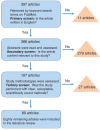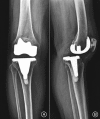Patient-Specific Orthopaedic Implants
- PMID: 28032697
- PMCID: PMC6584361
- DOI: 10.1111/os.12282
Patient-Specific Orthopaedic Implants
Abstract
Patient-specific orthopaedic implants are emerging as a clinically promising treatment option for a growing number of conditions to better match an individual's anatomy. Patient-specific implant (PSI) technology aims to reduce overall procedural costs, minimize surgical time, and maximize patient outcomes by achieving better biomechanical implant fit. With this commercially-available technology, computed tomography or magnetic resonance images can be used in conjunction with specialized computer programs to create preoperative patient-specific surgical plans and to develop custom cutting guides from 3-D reconstructed images of patient anatomy. Surgeons can then place these temporary guides or "jigs" during the procedure, allowing them to better recreate the exact resections of the computer-generated surgical plan. Over the past decade, patient-specific implants have seen increased use in orthopaedics and they have been widely indicated in total knee arthroplasty, total hip arthroplasty, and corrective osteotomies. Patient-specific implants have also been explored for use in total shoulder arthroplasty and spinal surgery. Despite their increasing popularity, significant support for PSI use in orthopaedics has been lacking in the literature and it is currently uncertain whether the theoretical biomechanical advantages of patient-specific orthopaedic implants carry true advantages in surgical outcomes when compared to standard procedures. The purpose of this review was to assess the current status of patient-specific orthopaedic implants, to explore their future direction, and to summarize any comparative published studies that measure definitive surgical characteristics of patient-specific orthopaedic implant use such as patient outcomes, biomechanical implant alignment, surgical cost, patient blood loss, or patient recovery.
Keywords: Custom implants; Orthopaedic surgery; Patient-specific implants.
© 2016 Chinese Orthopaedic Association and John Wiley & Sons Australia, Ltd.
Figures









References
-
- Tezuka A. Total joint replacement in rheumatoid hip and knee. Orthop Traumatol, 1980, 29: 787–790.
-
- Okazaki Y. Development trends of custom‐made orthopedic implants. J Artif Organs, 2012, 15: 20–25. - PubMed
-
- Kurtz S, Ong K, Lau E, Mowat F, Halpern M. Projections of primary and revision hip and knee arthroplasty in the United States from 2005 to 2030. J Bone Joint Surg Am, 2007, 89: 780–785. - PubMed
-
- Harrysson OL, Robertsson O, Nayfeh JF. Higher cumulative revision rate of knee arthroplasties in younger patients with osteoarthritis. Clin Orthop Relat Res, 2004, 421: 162–168. - PubMed
Publication types
MeSH terms
LinkOut - more resources
Full Text Sources
Other Literature Sources
Medical
Miscellaneous

